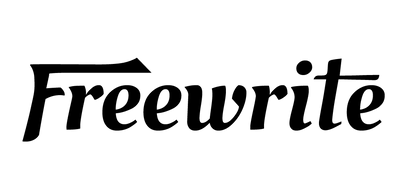Ernest Hemingway avait un talent littéraire, mais même lui trouvait l'écriture difficile. C'est pourquoi il s'en tenait à une routine d'écriture.
Les routines d'écriture ne sont pas universelles. Suivre scrupuleusement son programme d'écriture ne vous transformera pas en Hemingway, car ce qui a fonctionné pour lui ne fonctionnera pas pour vous. Cependant, découvrir sa routine peut vous inspirer à expérimenter comment intégrer l'écriture à votre vie.
1. Privilégiez la cohérence.
Votre état d'esprit est primordial. Pour Hemingway, l'écriture était un exercice qui se pratiquait, comme un sport. Surtout pendant que vous développez une habitude d'écriture, réservez-vous un petit moment pour écrire et concentrez-vous sur la durée de votre écriture plutôt que sur la quantité de mots que vous produisez.
Se présenter représente la moitié de la bataille, et cela deviendra plus facile.
2. Connais-toi toi-même.
Hemingway se levait tôt pour écrire le matin, car « personne ne vient le déranger ». Bien sûr, si l'inspiration le frappait, il restait plus longtemps à son bureau.
Avez-vous tendance à être plus productif le soir ? Pendant la journée ? Après une sieste ? En cas de doute, passez une semaine à expérimenter différents moments d'écriture et notez ce que vous pensez de votre processus d'écriture.
Soyez attentif aux modèles.
3. Séparez votre vie d’écriture.
Le conseil d'Hemingway aux écrivains est de « toujours s'arrêter quand on sait ce qui va se passer ensuite ». Une fois votre séance d'écriture terminée, essayez de ne pas vous laisser envahir par les pensées de votre travail.
Votre subconscient est la source de votre créativité et travaille en coulisses, même lorsque vous vous attaquez à d'autres tâches. Quand Hemingway se sentait vraiment déprimé, il répondait à ses lettres, une pause bienvenue. Détendez-vous et laissez votre subconscient imaginer pour vous.
4. Organisez votre environnement d’écriture.
Selon Daily Rituals de Mason Currey, Hemingway « écrivait debout, face à une étagère à hauteur de poitrine sur laquelle se trouvait une machine à écrire ». Il rédigeait ses premiers brouillons au crayon et notait sa production quotidienne de mots sur un tableau.
Assurez-vous que votre espace d'écriture soit séparé, par exemple, de votre salle de jeux. Un espace dédié à l'écriture vous permet d'entrer plus rapidement dans l'état d'esprit d'écriture. Installez-vous confortablement, mais pas trop pour écrire.
5. Ayez confiance en vous.
Reconnaître que le syndrome de la page blanche n'est qu'un blocage mental diminue son pouvoir sur vous. Ce n'est pas une force inexplicable et invincible ; au final, vous avez la capacité de le surmonter.
Quand Hemingway sentait le début du syndrome de la page blanche, il « se tenait debout, contemplait le toit de Paris et pensait : "Ne t'inquiète pas. Tu as toujours écrit avant et tu vas écrire maintenant. Il te suffit d'écrire une phrase vraie. Écris la phrase la plus vraie que tu connaisses." »
6. Sachez quand arrêter d’écrire.
Les écrivains évoquent rarement cette étape, car la plupart d'entre nous peinent déjà à se lancer. Mais Hemingway, qui a certainement réfléchi à chaque étape de son processus d'écriture, a quelques mots de sagesse :
« Le mieux est de toujours s'arrêter quand on avance bien et qu'on sait ce qui va se passer ensuite. Si vous faites cela chaque jour lorsque vous écrivez un roman, vous ne serez jamais bloqué. »
La prochaine fois que vous poserez vos doigts sur le clavier, pensez à votre processus d'écriture du point de vue d'Hemingway. Dites-nous ce que vous en pensez !
-
Inscrivez-vous sur la liste d'attente Hemingwrite ici. Hemingwrite est l'outil d'écriture sans distraction par lequel tout a commencé. Les quantités sont extrêmement limitées.



























